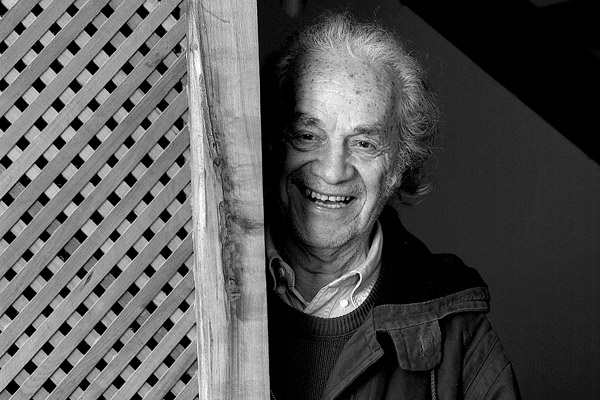Nicanor Parra (1914 – 2018)
Nicanor Parra Sandoval, creador de la antipoesía, falleció a los 103 años, tras una vida de reconocimientos entre los cuales se cuentan el Premio Nacional de Literatura en 1969, el Premio Iberoamericano de Poesía Pablo Neruda en 2012, el Premio Juan Rulfo en 1991, el Reina Sofía en 2001 y el Premio Cervantes, en 2011, máximo galardón de la literatura en lengua hispana.
El mayor del clan Parra, nacido en San Fabián de Alinco en 1914 y criado en el seno de una familia campesina, publicó su primer libro a la edad de 21 años, en 1935: “Cancionero sin nombre”.
Aunque estudió matemáticas y física, fue su búsqueda y experimentación literaria la que lo hizo conocido por su estilo único y rupturista. Fue en 1954 con la publicación de «Poemas y Antipoemas» que presentó la propuesta literaria que lo caracterizó y lo llevó a desarrollar un legado que fue reconocido con los premios literarios y distinciones más relevantes.
En nuestra biblioteca hemos realizado una exposición bibliográfica que puede visitarse hasta el 20 de febrero. Accede aquí a la bibliografía
Visita el sitio de la Biblioteca Nacional de Chile
Nicanor Parra Sandoval, creator of the «anti-poetry», died at the age of 103, after a lifetime of recognitions including the National Literature Prize in 1969, the Pablo Neruda Ibero-American Poetry Prize in 2012, the Juan Rulfo Prize in 1991, the Reina Sofía in 2001 and the Cervantes Prize, in 2011, the highest award for literature in the Spanish language.
The oldest of the Parra clan, born in San Fabián de Alinco in 1914 and raised in a peasant family, published his first book at the age of 21, in 1935: «Cancionero sin nombre».
Although he studied mathematics and physics, it was his search and literary experimentation that made him known for his unique and disruptive style. It was in 1954 with the publication of «Poemas y Antipoemas» that he presented the literary proposal that characterized him and led him to develop a legacy that was recognized with the most important literary prizes and distinctions.
